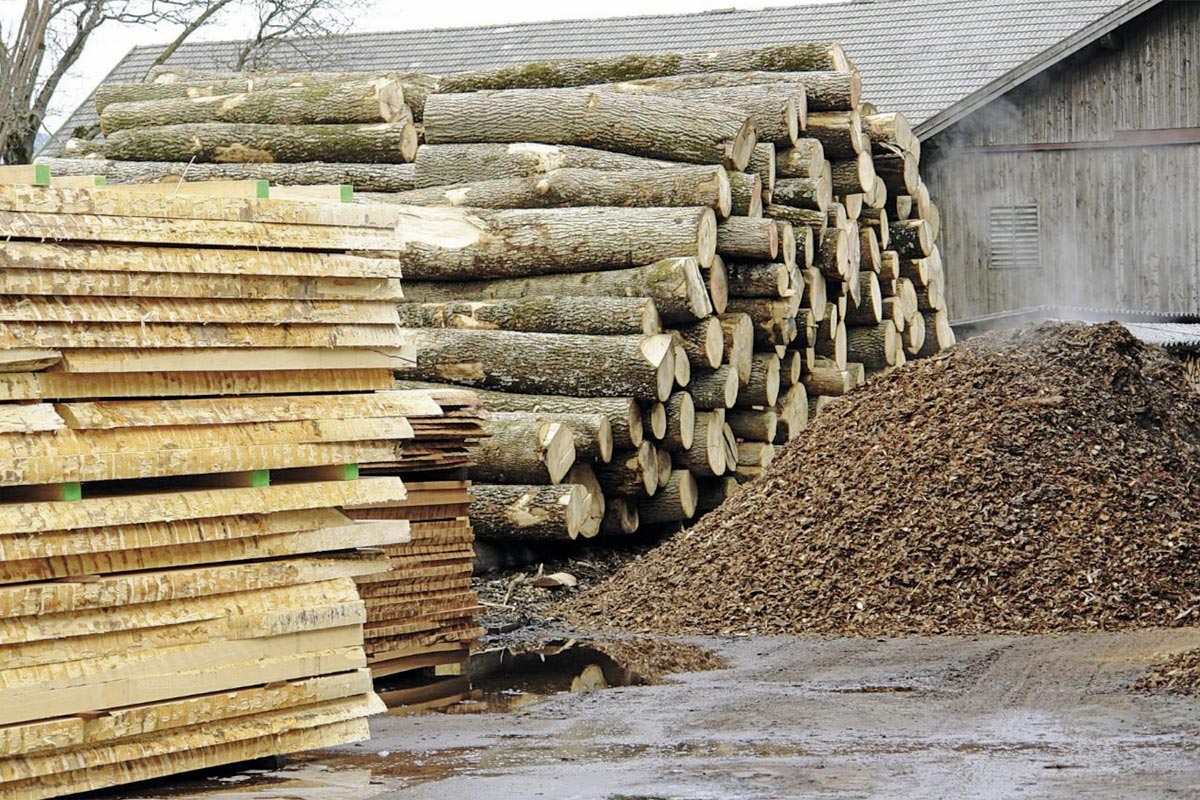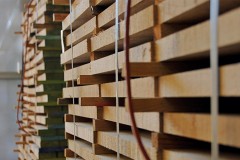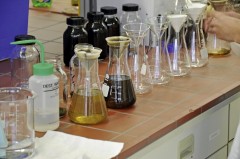When woodland biomass, sawn timber and byproducts of sawing are dried, various constituents accumulate that have received little attention up to now. These substances have considerable potential as feedstocks in industrial production. In BioSubTro, a research project of the University of Applied Sciences Salzburg in collaboration with Weitzer Parkett GmbH & CO KG, Sanoll Biokosmetik GmbH and Sägewerk Johann Pöckl, new processes are being developed to capture these byproducts of timber drying and put them to work.
Substances obtained sustainably from lignified material are of special interest for the chemical, pharmaceutical and cosmetics industries. As a rule, extracting these is expensive; in most extraction processes the timber is shredded, after which it is no longer available for cascading uses.
Researchers at University of Applied Sciences Salzburg are now investigating new options for obtaining and utilizing usable substances from biomass. Here the materials (such as woodland biomass, bark or sawn timber) are dried on technically relevant scale, and the resulting volatile and extractive constituents are obtained in the form of condensates.
Various processes are then carried out to purify and separate the resulting mixtures; later the ingredients are characterized in terms of quantity and quality.
Preservatives for natural cosmetics
The wood and bark of living trees contain natural substances which protect them against attack by fungi and bacteria. These substances‘ antimicrobial properties are of great interest, and are meant to be harnessed in the new processes. Up to now manufacturers of natural cosmetics had to use conventional substances to protect their products. As part of the project various screening tests are carried out with condensate and its constituents, to demonstrate the antimicrobial efficacy of these substances and their preservative properties in cosmetic products.
Initial findings
So far various categories of substance, such as carbohydrates or polyphenols, have been identified in the condensates in varying concentrations, and initial investigations have shown that the constituents have an antimicrobial effect on the test bacilli employed.
The next step will be to analyse how the active ingredients in cosmetic products can be processed, and to test their preservative effect there. Other possible fields of application and market potentials for these biogenic substances are to be identified within the project, too.
Share

